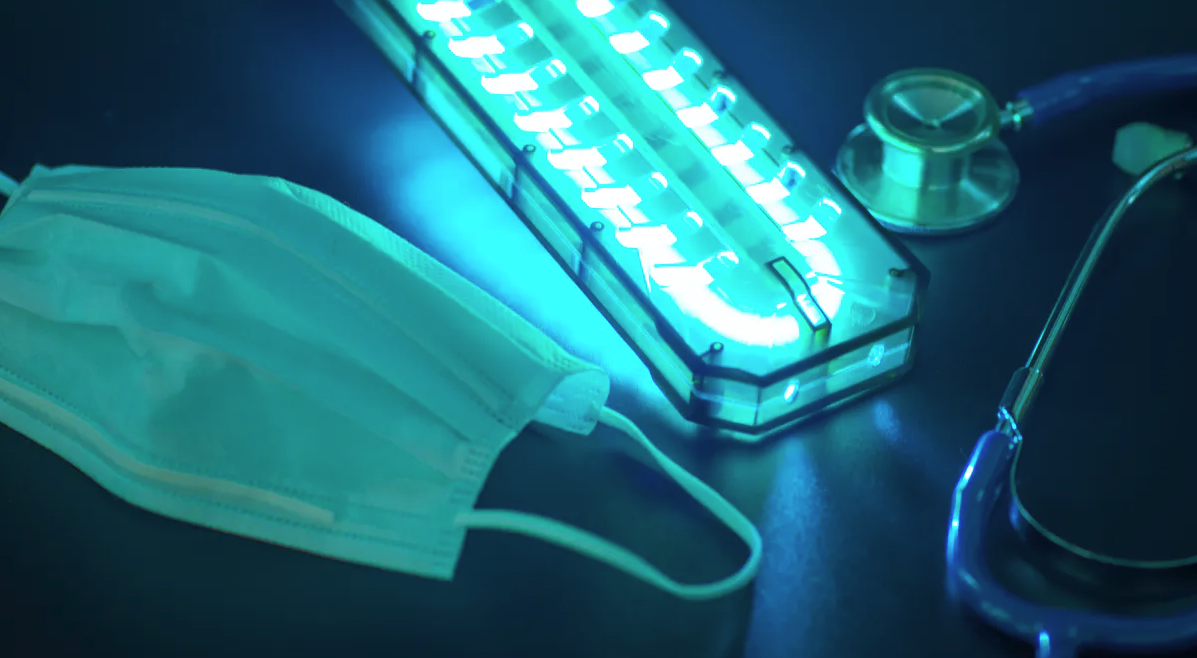Exposure to pathogens (those that cause disease- e.g. viruses, bacteria, mold spores) is a big concern in the world of public health. Airborne pathogen worries include methicillin-resistant Staphylococcus aureus (MRSA), the flu, bioterrorism, and other severe urespiratory problems like severe acute respiratory syndrome (SARS). One solution long-utilized to combat airborne pathogen spread is ultraviolet germicidal irradiation (UVGI).
A peer-reviewed science article written by Reed (2010) examined numerous studies conducted on the efficacy and safety of the use of ultraviolet (UV) light in eliminating pathogens in the air. The article concluded that if used correctly, UV light (specifically UV-C- a particular wavelength) can be safe while at the same time being incredibly effective- thus helping to minimize the threat of airborne spread.
As summarized by Reed, UV-C is short wavelength UV (100-280 nm) within the UV spectrum. UV-C acts as a germicide by damaging the nucleic acids including deoxyribonucleic acid (DNA) and ribonucleic acid (RNA) of a microbe. When the high-energy wavelength hits the DNA or RNA, it causes a mutation to form between the smaller bases that build the molecule of DNA or RNA. With this mutation to its DNA (or RNA in the cases of some viruses), the microbe is unable to replicate (grow in population size), thus preventing its spread. Incorporation of UV-C into a building’s heating, ventilation, and air-conditioning (HVAC) systems is one way of cleaning the air of microbes. This is done by pulling the air using the HVAC system past the UV-C emitter.
UV-C has been utilized in schools, hospitals, and other locations with great success, and has been documented as a germicide since the 1930s.


